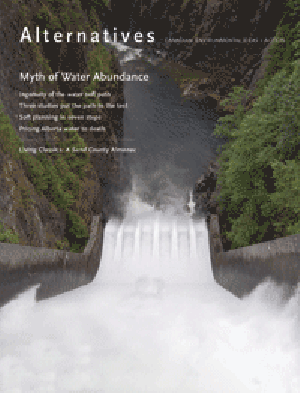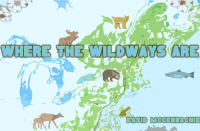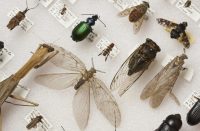Editorial: Reversing the Flow This issue of Alternatives focuses on water soft paths. For most people this statement invites the question: What are water soft paths? Though noun and adjective have been reversed, water soft paths share a common heritage with the soft energy paths developed in the 1970s by a group of researchers including Amory Lovins, co-founder of the Rocky Mountain Institute in Colorado.
Editorial: Reversing the Flow This issue of Alternatives focuses on water soft paths. For most people this statement invites the question: What are water soft paths? Though noun and adjective have been reversed, water soft paths share a common heritage with the soft energy paths developed in the 1970s by a group of researchers including Amory Lovins, co-founder of the Rocky Mountain Institute in Colorado.
Lovins did some of his earliest work on soft energy paths in Canada, along with a group of Canadian analysts. The results of this effort first appeared in Alternatives in 1979/1980 (Vol. 8:3/4 and Vol. 9:1) and three years later it became a book, Life After Oil, authored by Robert Bott, John Robinson and myself. …
 Read selected articles and web extras from this issue
Read selected articles and web extras from this issue
Here’s what else you get when you buy the issue:
Science Desk – Kasia Kaluzny
The climate scoop is in penguin poop.
Letter from Tanzania – Greg John
Land of matazioworks just fine with low-tech.
Ingenuity Trumps Hard Tech – David B. Brooks, Oliver M. Brandes
The water soft path is the best bet for Canada’s public and ecological needs.
An Innovative Framework
Water Soft Path Principles
The Telling Studies – Elizabeth Hendriks, Graham R. Daborn, Lisa Isaacman, Nabeela Rahman, Oliver M. Brandes, Paul A. Kay, Tony Maas
Three studies from the community, watershed and provincial level show how the water soft path really works.
Community Paths –Sarah Jordaan and Carla Stevens
Watershed Paths – Lisa Isaacman and Graham R. Daborn
Provincial Paths – P.A. Kay, E. Hendriks, and N. Rahman
Crisis? What Crisis? – Susan Holtz
Water soft path proponents swim against a current of sparse data, skeptical citizens and policy barriers.
Barriers Along the Path Sarah Jordaan and Carla Stevens
Great Potential in Pulp and Paper Elizabeth Hendricks
Virtual Water Trading Nabeela Rahman
Waterless Lunch David B. Brooks and Anja Grauenhorst
Ice Rinks Score Too Paul A. Kay
Soft Planning – David B. Brooks, Oliver M. Brandes
How to create a water soft path.
Water Resources
Brim full of water soft path reports, action opportunities and follow-ups.
Water Philosophy – Ardith Walkem
Indigenous laws treat water with awe and reverence rather than as a resource to be managed.
Pricing Water to Death – Jeremy J. Schmidt
Alberta’s water permits prolong the problem.
Hands Off Our Crap – Pina Belperio
Whistler, BC, maintains control of its public sewage plant.
MyMarket – Peter Stock
Only certified local producers need apply.
Living Classics: The Symbiotic Vision – Kent A. Peacock
Lynn Margulis and James Lovelock offer a modern take on Leopold’s classic, A Sand County Almanac.
Review: Culture of More – Fraser Los Deep
Economy by Bill McKibben
Brain Mulch: Invitation – Avery Ascher
Publication of this issue was made possible by The Gosling Foundation; The Salamander Foundation; and the support from our many subscribers. We acknowledge the financial support of Canada’s International Development Research Centre (www.idrc.ca); EJLB Foundation; Friends of the Greenbelt Foundation; The McLean Foundation; Ontario Media Development Corporation; Ontario Trillium Foundation; Ontario Work Study Plan. We acknowledge the financial support of the Government of Canada through the Canada Periodical Fund (CPF) of the Department of Canadian Heritage toward our project costs. The support of the Faculty of Environment at the University of Waterloo and the Waterloo Environmental Studies Endowment Foundation is appreciated.’






 Read
Read 






